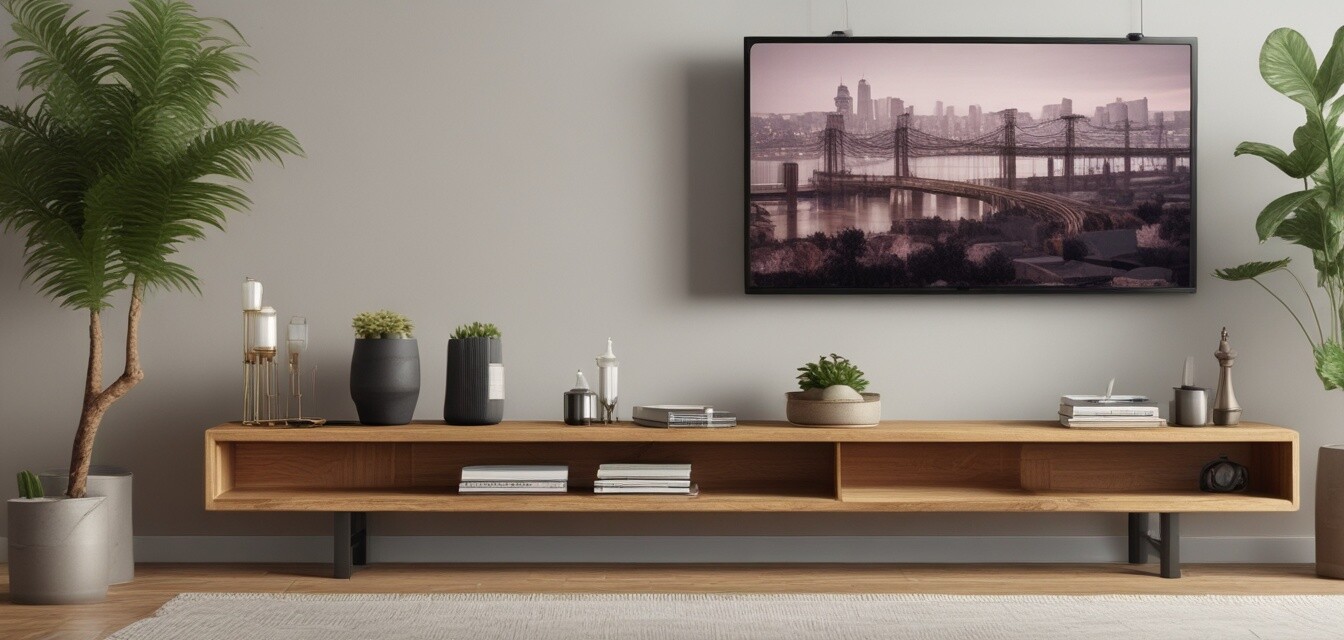
Eco-Friendly Design Features to Look for in TV Stands
Choosing a sustainable TV stand for your home cinema is more than just selecting a durable piece of furniture. It involves understanding the environmental impact of your choice and how design features can contribute to a greener lifestyle. In this guide, we will highlight key eco-friendly design features that you should consider when selecting the best TV stand for your space.
Key Takeaways
- Prioritize materials that are sustainable and eco-friendly.
- Look for designs that promote durability and longevity.
- Consider the stand's functionality regarding space and storage.
- Choose pieces that support a modular or adaptable design.
- Avoid stands that use harmful chemicals or non-sustainable practices.
1. Sustainable Materials
The type of material used in a TV stand is critical in determining its eco-friendliness. Here are some sustainable materials to consider:
| Material | Benefits |
|---|---|
| Bamboo | Fast-growing, renewable, and strong material. |
| Reclaimed wood | Reduces waste and preserves natural resources. |
| Particleboard from recycled wood | Makes use of waste wood products, decreasing land impact. |
| Metal | Durable, often made from recycled materials, and can be entirely recycled. |
2. Energy-Efficient Production
When evaluating a TV stand, consider how energy-efficient its production process was. Manufacturers who invest in energy-efficient practices reduce their overall impact on the environment. Look for brands that use:
- Renewable energy sources in manufacturing.
- Low-emission production techniques.
- Environmental certifications, such as FSC certification.
3. Functional Designs
Choosing a TV stand with smart and functional design features can lead to longevity and improved usability. Here are some design aspects to look for:
- Storage options that maximize space, like hidden compartments and shelves.
- Adjustable or modular components that can adapt to your needs.
- Built-in cable management systems to keep wires organized and out of sight.
4. Finishes and Adhesives
Be cautious of the finishes and adhesives used in the TV stand, as some can contain harmful chemicals. Opt for:
- Natural oil or wax finishes instead of synthetic varnishes.
- Formaldehyde-free adhesives to minimize harmful emissions.
5. Durability and Longevity
A sustainable TV stand should be built to last, thus preventing the need for replacements and reducing waste. When assessing durability:
- Check for solid construction with quality materials.
- Look for a warranty or guarantees from the manufacturer, indicating confidence in their product.
- Prefer designs that can withstand everyday wear and tear.
6. Timeless Design
Opting for a TV stand with a timeless design ensures it complements changing decor trends without the need for frequent updates. Consider:
- Classic shapes and neutral colors.
- Versatile styles that blend with both modern and rustic aesthetics.
- Pieces that can serve multiple purposes, such as storage and display areas.
Conclusion
Your choice of TV stand can be an important part of creating an eco-friendly home cinema. By focusing on sustainable materials, energy-efficient production, and thoughtful design, you can select a TV stand that not only enhances your living space but also supports your commitment to preserving the environment. For further information on different styles and options available, explore our various product categories, such as corner TV stands, entertainment consoles, and wooden TV stands.
Tips for Choosing Eco-Friendly TV Stands
- Research the brand's sustainability practices.
- Look for customer reviews emphasizing durability and quality.
- Measure your space thoroughly to avoid size errors.
- Consider whether you prefer a modern, modular design or a classic natural look.
- Think about incorporating your stand with other furniture pieces for a cohesive look.
Pros
- Environmentally friendly materials
- Long-lasting and durable
- Versatile design options
- Reducing impact on natural resources
Cons
- Potentially higher initial costs
- Limited availability of some eco-friendly materials
- Need for careful maintenance to prolong life
For more insights into sustainable furniture choices, check out our articles under the Eco-Friendly Living section and consider various buying guides for informed purchasing decisions.